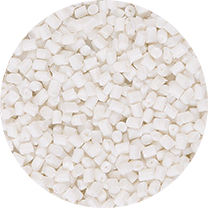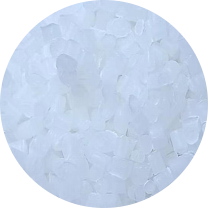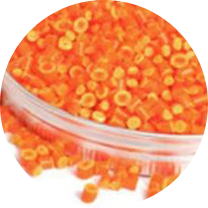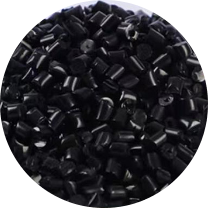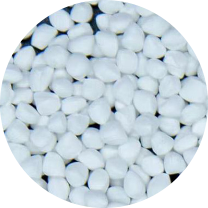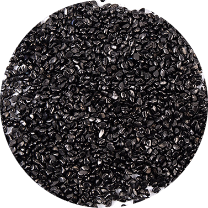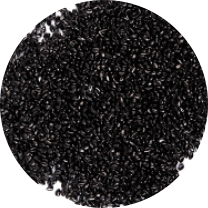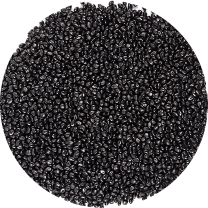NEWS
Home / News / Industry News / What is the effect of the addition ratio of carbon black masterbatch on the strength and flexibility of the fiber?
What is the effect of the addition ratio of carbon black masterbatch on the strength and flexibility of the fiber?
In the production of spunbond nonwovens, the addition ratio of carbon black masterbatch has a significant effect on the strength and flexibility of the fiber. As a functional additive, carbon black can not only give the fiber a black appearance, but also improve the physical properties and weather resistance of the fiber. The following is a detailed analysis of the effect of the addition ratio on fiber performance:

Non-Woven Fabrics Spunbond Nonwovens Carbon Black Masterbatch
1. The effect of carbon black masterbatch on fiber strength
Low addition ratio (0.5% - 2%):
Limited strength improvement: At a low addition ratio, the distribution of carbon black particles in the fiber matrix is relatively sparse, and the effect on improving the overall strength of the fiber is limited.
Good dispersion: Low addition ratio helps carbon black particles to be better dispersed in the polypropylene matrix, reducing particle aggregation, thereby avoiding stress concentration points caused by particle aggregation, and the fiber strength is relatively stable.
Medium addition ratio (2% - 5%):
Significantly improved strength: As the addition ratio increases, carbon black particles form more physical connection points in the fiber matrix, which can enhance the tensile strength and modulus of the fiber.
Optimal addition range: Studies have shown that when the addition ratio is between 2% and 5%, the strength and toughness of the fiber can usually achieve a good balance. At this time, the dispersion of carbon black particles is still good, and the reinforcing effect on the fiber is most significant.
High addition ratio (>5%):
Strength may decrease: When the addition ratio is too high, carbon black particles may aggregate to form larger clusters. These clusters will become stress concentration points inside the fiber, causing the fiber to break more easily during stretching, and the strength will decrease instead.
Processing difficulty increases: High addition ratios may cause problems such as clogging of spinnerets during fiber processing, affecting production efficiency and fiber quality.
2. Effect of carbon black masterbatch on fiber flexibility
Low addition ratio (0.5% - 2%):
Flexibility does not change much: At low addition ratios, carbon black particles have little effect on fiber flexibility, and the fiber flexibility is similar to that without carbon black addition.
Medium addition ratio (2% - 5%):
Flexibility slightly decreased: As the addition ratio increases, carbon black particles form more connection points in the fiber matrix, which will limit the flexibility of the fiber to a certain extent. However, this effect is usually within an acceptable range, and the fiber can still maintain good flexibility.
High addition ratio (>5%):
Flexibility significantly decreased: Too high an addition ratio will cause carbon black particles to aggregate, forming more hard areas inside the fiber, which significantly reduces the flexibility of the fiber. Such fibers may be limited in their scope of use in practical applications due to insufficient flexibility.
3. Optimal addition range
Based on the above analysis, the optimal addition range of carbon black masterbatch is usually between 2% and 5%. Within this range, the strength and flexibility of the fiber can achieve a good balance, and the dispersion of carbon black particles is also good, which can give full play to its reinforcing and functionalizing effects.
4. Optimization suggestions in actual production
Dispersion optimization: In actual production, it should be ensured that the carbon black masterbatch has good dispersion. Efficient mixing equipment (such as twin-screw extruders) and optimized production processes can be used to ensure that carbon black particles are evenly distributed in the fiber matrix.
Quality inspection: The strength and flexibility of the fiber are monitored in real time through online testing equipment to ensure that the addition ratio is within the optimal range, and the production process is adjusted in time according to the test results.
Application demand matching: According to the specific application requirements of spunbond nonwovens (such as packaging, agriculture, medical and health care, etc.), the addition ratio of carbon black is adjusted. For example, for application scenarios that require higher strength, the addition ratio can be appropriately increased; while for scenarios with higher flexibility requirements, it needs to be controlled at a lower ratio.
prevNo previous article
nextWhat is the effect of the addition ratio of multi-color masterbatch on the color uniformity of the fiber and the quality of the product?
Popular products
The main products include various types of plastic film bags, such as takeout packaging bags, express bags, shopping bags, food composite bags, wrapping films, agricultural film, etc., and disposable dining utensils, such as lunch boxes, knives, forks, spoons, etc.
If you are interested in our products, please consult us
CONTACT DETAILS
- Address : 11-1, No. 600 Tongjiang Middle Road, Xinbei District, Changzhou City, Jiangsu Province
- Whatsapp : 0086-13775276672
- Tel: 0086-13401333666
- Email: tony@rymasterbatch.com
QUICK LINK
NEWS CENTER
MOBILE TERMINAL
Copyright © Changzhou Runyi New Material Technology Co., Ltd. All Rights Reserved.
Custom China Antibacterial Masterbatch


 CONTACT US
CONTACT US


 English
English 中文简体
中文简体 한국어
한국어 عربى
عربى